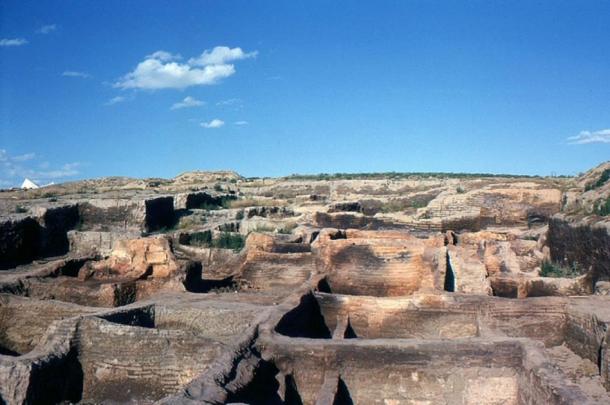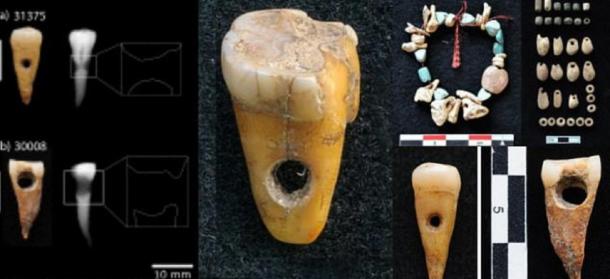Human teeth made into pendants in Turkey 8,500 years ago
In a prehistoric archaeological site in Turkey the first evidence of this practice in the Near East, a region that encompasses Western Asia and Turkey, researchers discovered two 8 500-year-old human teeth that were used as pendants in necklaces and bracelets.
The University of Kopenhagen researchers has stated that although evidence has shown that human teeth were used for ornamental purposes at European sites, this practice has never before been documented at these or subsequent periods in the Near East.
The study published by the Journal of Archeological Science on the basis of the rare findings revealed that the human teeth had deep symbolic significance for the people who wore them.
The researchers including scholars from the University of Copenhagen in Denmark uncovered three 8500 -year-old-teeth during excavations in Catalhoyuk, Turkey between 2013 and 2015.
They said the unearthed teeth appeared to have been intentionally drilled to be worn as beads in a necklace or bracelet.

On further analysis, the researchers confirmed that two of the teeth had indeed been used as beads or pendants.
“Not only had the two teeth been drilled with a conically shaped microdrill similar to those used for creating the vast amounts of beads from animal bone and stone that we have found at the site, but they also showed signs of wear corresponding to extensive use as ornaments in a necklace or bracelet,” said Scott Haddow, University of Copenhagen archaeologist and first author of the study.
According to the study, the two teeth pendants were probably extracted from two mature individuals postmortem.
“The wear on the teeth’s chewing surfaces indicates that the individuals would have been between 30-50 years old.
And since neither tooth seems to have been diseased-which would likely have caused the tooth to fall out during life, the most likely scenario is that both teeth were taken from skulls at the site,” Haddow added.
The most interesting insight from the study is the fact that human teeth and bone were not selected and modified more often, the researchers said.
“Because of the rarity of the find, we find it very unlikely that these modified human teeth were used solely for aesthetic purposes but rather carried profound symbolic meaning for the people who wore them,” Scott Haddow explained.

Haddow added that burials at the site often contained beads and pendants made from animal bone/teeth and other materials, indicating that it may have been a deliberate choice not to include items made from human bone and teeth with burials.
The researchers postulated that these human teeth pendants were perhaps related to specific – and rare – ritual taboos.





